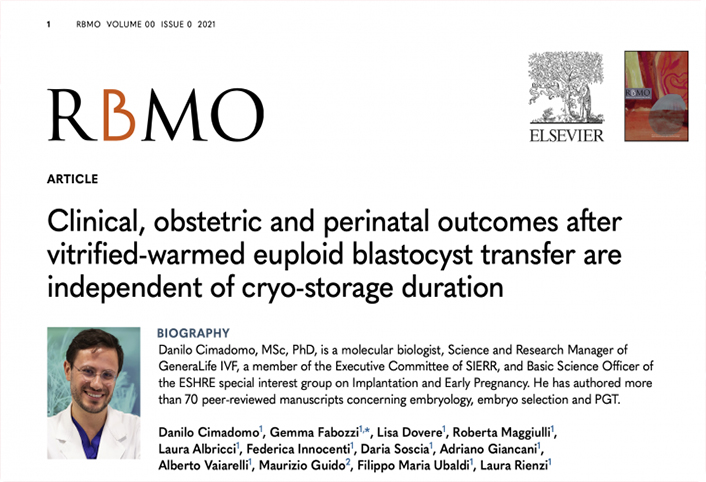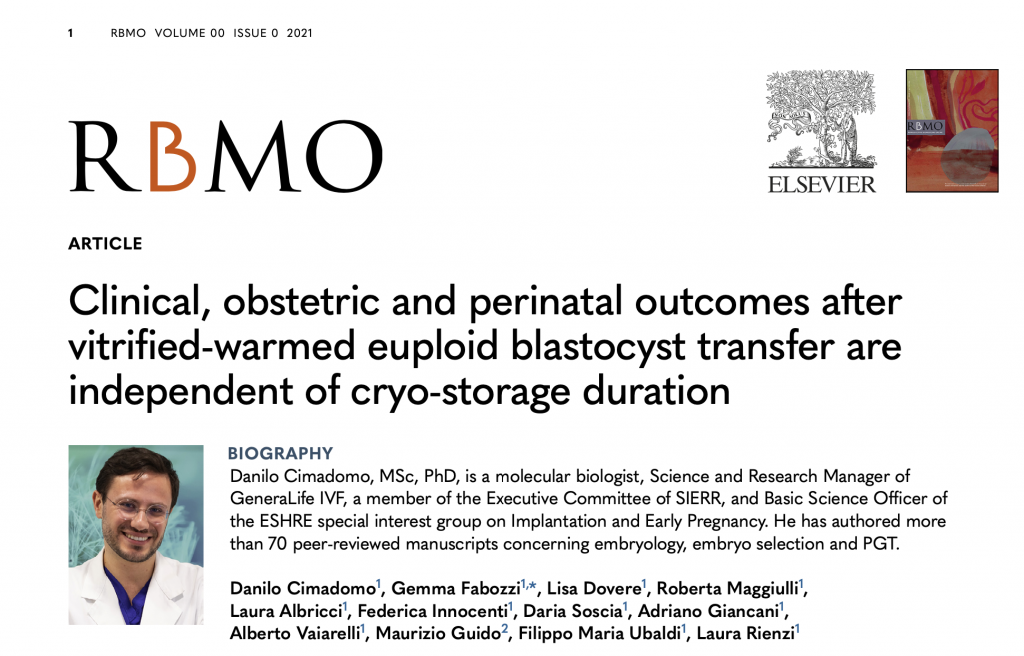
Clinical, obstetric and perinatal outcomes after vitrified-warmed euploid blastocyst transfer are independent of cryo-storage duration
Danilo Cimadomo, Gemma Fabozzi, Lisa Dovere, Roberta Maggiulli, Laura Albricci, Federica Innocenti, Daria Soscia, Adriano Giancani, Alberto Vaiarelli, Maurizio Guido, Filippo Maria Ubaldi, Laura Rienzi
RBMO October 07, 2021DOI:https://doi.org/10.1016/j.rbmo.2021.09.027
Abstract
Research question
The study aimed to retrospectively evaluate the impact of cryo-storage duration on clinical, obstetric and perinatal outcomes after vitrified-warmed euploid blastocyst transfer.
Design
This was an observational study including 2688 vitrified-warmed euploid single blastocyst transfers that was conducted at a private IVF centre between May 2013 and March 2020. It included a total of 1884 women (age 38 ± 3 years) undergoing at least one transfer after preimplantation genetic testing for aneuploidies. The euploid blastocysts transferred were clustered into seven groups according to the cryo-storage duration between vitrification and warming: ≤60 days (n = 646; control group), 61–90 days (n = 599), 91–180 days (n = 679), 181–360 days (n = 405), 361–720 days (n = 144), 721–1080 days (n = 118) and >1080 days (n = 97). The primary outcome was the live birth rate (LBR) per transfer. The secondary outcomes were miscarriage rate, obstetric and perinatal issues. The data were adjusted for confounders through logistic or linear regressions.
Results
A significantly lower LBR was reported for transfers performed within 91–180 days (n = 291/679, 42.9%; P = 0.017), 181–360 days (n = 169/405, 41.7%; P = 0.016) and 361–720 days (n = 57/144, 39.6%; P = 0.034) versus ≤60 days (n = 319/646, 49.4%). However, this was mainly due to top-quality embryos being transferred first when more euploid blastocysts were available, thereby leaving lower quality ones for subsequent procedures. Indeed, the multivariate odds ratios adjusted for confounders showed similar results across all cryo-storage duration clusters. No difference was reported also for all secondary outcomes.
Conclusions
Cryo-storage duration even beyond 3 years from blastocyst vitrification does not affect clinical, obstetric and perinatal outcomes.

